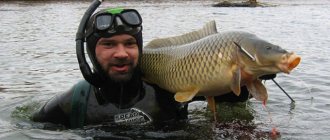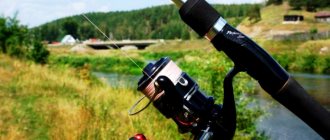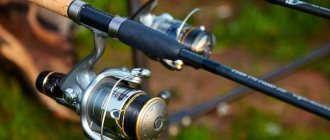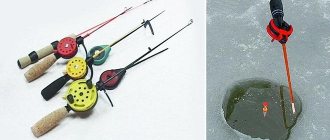Nowadays, hunting has become very difficult and expensive, especially on land. Due to many restrictive laws, not everyone can afford such pleasure. In this difficult situation, an even more amazing activity will come to the rescue - hunting underwater.
Thanks to her, you will best be able to satisfy your needs in extreme sports. In addition, a large dose of aesthetic pleasure is guaranteed. Anyone who has dived once knows how easily the charming underwater world can distract you from your busy weekdays.
There is a myth that spearfishing is only possible in sea water due to its purity. It is enough to visit one or two fresh water bodies closest to your home to take a closer look and discover that this is a fallacy. In almost every one of them you can meet someone of similar interest, because this activity is increasing in popularity from year to year. It is enough to snorkel once and see a big fish to join the ranks of underwater hunters or divers for a long time.
Where to begin?
The best option is to first go to some diving club, where there are experienced instructors who are ready to share their years of experience inexpensively, and perhaps even free of charge. Because there are a lot of nuances here. If you want to succeed in this matter, you will have to arm yourself with a considerable base of knowledge and skills regarding the ability to hold your breath, choose the right equipment, dive correctly and much more.
Spearfishing is a sport
To make it clearer. Spearfishing is an official sport where good sportswear and knowledge of fish habits come in handy. Competitions have been regularly held on it since the fifties (including the World and European Championships).
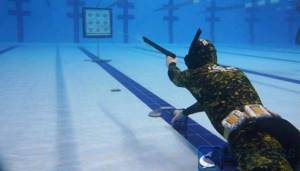
The athlete dives into the water and, holding his breath, tries to shoot a larger fish, using a pneumatic gun or crossbow. The use of breathing apparatus is prohibited in almost all countries of the world (this is already poaching).
Spearfishing is possible in sea and fresh water at different depths, depending on the experience and physical capabilities of the athlete. Particularly experienced hunters dive up to fifty meters deep, holding their breath for up to five minutes.
Spearfishing for beginners. Looking for trophy fish

The first underwater hunts, which bring joy and pleasure only from the very fact of being in the picturesque water element, are slowly passing. I want more. Shooting at ordinary fish is becoming less and less common. You don’t raise your hand to shoot fish for the sake of fish. I want decent trophies. This position of an underwater hunter is completely justified and natural. Experience suggests that the less you shoot at simple “non-credit” targets, the greater the likelihood of encountering a big fish that can become a trophy.
In search of such fish, the underwater hunter scours the most inaccessible corners of his reservoir. Large fish become very cautious, which is why they live to the age when they can be considered large. An underwater hunter can find such fish in dense thickets of reeds, in dense thickets of underwater grass, in significant rubble of trees. As a rule, large fish prefer to be at depth, near the bottom. However, there are cases of its detection in very shallow places in the reservoir. Therefore, those underwater hunters who have not mastered the technique of holding their breath for a long time should not think that their chance of meeting a trophy is negligible. There are known underwater hunters who have never hunted at depths of more than 2 meters, and, nevertheless, with a successful shot they have written down very worthy specimens of aquatic inhabitants in their “book of honor”.
Meetings between an underwater hunter and a trophy fish are especially common in a small river. The Small River is fraught with many surprises and mysteries; the fish that live here are diverse in both types and sizes. This makes hunting in a small river very exciting.
Naturally, to meet trophy fish, we follow the basic rules of underwater hunting and, above all, silence. To hunt for trophy fish on small rivers, you can use the method of ambush, active search or rafting. The choice of hunting method depends on the transparency of the reservoir, the intensity of the current and the personal preferences of the underwater hunter.
Reed thickets must be examined especially carefully and slowly, trying to make as little noise as possible. Although a large fish can stand firmly in the reeds, especially in very dense thickets, it can change its rule and leave long before meeting the underwater hunter. When moving through the reeds, you should examine the surroundings directly in front of you, also paying attention to the bottom, then carefully look around. In reeds, special attention should be paid to various types of clearings, windows and corridors. You should also be careful when moving in the channels between the reed thickets.
Most underwater inhabitants can be found in reed forests. Here it is not uncommon to encounter large pike, ide, crucian carp, etc. Large bream, which like to stand or swim slowly in the reeds, also behave less cautiously in such places.
Underwater forests on the border of reed beds will also be a favorable place for an underwater hunter to encounter a trophy. These can be thickets of water lilies, lilies and any other underwater grass. Such forests can be difficult to navigate for an underwater hunter, so you shouldn’t just mindlessly go into the thick of it. All the same, detecting fish and shooting at them in such forests is very difficult, especially with a combination of types of rugged underwater vegetation. Here, too, you should first examine the existing windows and passages.
In my memory, many encounters with truly “qualified” fish took place precisely in the reed beds. Such meetings are possible even in the absence of sufficient spearfishing experience, incl. long-term breath-holding skills. Therefore, hunting in the reeds is exciting for the novice spearfisher and provides the best opportunity to meet a variety of trophy fish.
What is diving?
Diving is translated from English as diving. The essence of diving is swimming underwater using special breathing apparatus that allows you to stay under water for up to twelve hours! Diving, depending on the tasks, can be recreational, technical, sports and commercial (professional).
The equipment, not counting the devices that provide an autonomous supply of breathing gas and guns, is no different between divers and hunters. Both of them use masks, fins, snorkels, wetsuits, compasses, knives, flashlights, dive computers, buoys, and weight belts. If necessary, you can add a knife, helmet and other devices to this list.
But equipment for a hunter is not decisive. Of course, more devices will give you some head start, but still the main factor is skill.
Spearfishing technique
You can often see a picture where two underwater hunters in the same body of water get completely different catches. How to achieve such mastery? The point here is certainly not a matter of innate gift. As they say, everything comes with practice. The main thing is desire and perseverance, and everything else will come with experience.
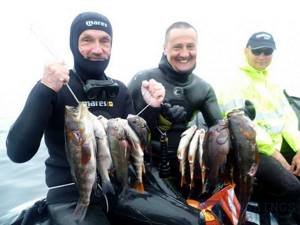
You need to thoroughly study the habits of fish, pay attention to the methods of searching for specific fish in a specific body of water, learn how to swim and dive correctly, without scaring away the objects of your hunt. For some this comes easily and quickly, while for others it takes years of training. The main thing is to love what you do!
A very important point is the ability not to scare away the found prey. Almost all novice hunters are too loud in the water; they paddle wildly with their free hand and loudly hit the water with their fins. Experienced athletes never allow sudden movements; many of them wear lead bracelets on their legs for quieter swimming.
The ability to dive deeply (more than fifteen meters) and excellent physical data are, of course, welcome in diving and spearfishing, but they are not mandatory. There are, for example, many excellent hunters who have never dived deeper than ten meters.
A lot of educational information can be obtained from special fishing literature, which is abundant on the shelves of bookstores. But a small nuance is that ordinary fishermen are looking for active, hungry fish, while underwater hunters prioritize calm, resting fish.

As for hunting techniques, each athlete has his own secrets and tricks. But all techniques, roughly speaking, can be divided into two main groups: active search and lying down.
Underwater dangers: stories of those who were able to survive - part 1
Statistics show that diving lags behind simple swimming in terms of the number of accidents, and freediving and spearfishing lags behind diving. But this is by no means a reason for relaxation. We will try to talk about various accidents and warn against mistakes. Let's talk about “Loss of consciousness on ascent.” From the point of view of medicine and physiology, enough has already been written about this. We will talk about the situational side of the issue. A friend of mine who loves spearfishing tells this story. Cases of this kind are not rare and are similar in many ways.
We had an ordinary trip to the tropics ahead. We decided to visit Indonesia to catch trevally and tuna there. The place was familiar to us, but the conditions left much to be desired. Both strong currents at low and high tides, and large waves that arise when the wind is in the opposite direction of the current interfered. However, the fish that live here served as good compensation for all the inconveniences.
Since the currents often change there, we changed the hunting location all the time, but we tried to choose it in the shade of the rocks, where there is protection from strong currents. This time five people took part in the hunt, and we changed the place less often, since we did not want to waste precious time getting ready and disembarking. Because of this, we continued to hunt when conditions began to deteriorate, trying to get around the strong currents that drove us away from our homes.
It wasn't a good day for hunting. I dived many times to depths of 17 to 22 meters, and sometimes up to 25, but I didn’t see any attractive prey. Around 5 pm I felt tired. I was tired mainly from working with fins, which turned out to be too hard for me, and the lack of time to rest. The water was heated to 27 degrees, it was visible 16-17 meters around. I was at a depth of about 18 m in a 3mm thick wetsuit, and 3 kg of weight hung on my belt. I started diving with a 4 kg load, only after a depth of 20 m did 1 kg seem unnecessary to me, as it became difficult to float up.
At about 17.00 I found myself on the edge of a plateau at a depth of 17 m, the edges of which descended in the form of steps. Diving again, I hovered at a depth of about 15 m above the dump. A few seconds later, on one of the ledges below me, I noticed movement. It was, if you look at the silhouette, a rather large grouper. And, although I never hunt these fish, I decided to shoot him to brighten up an empty day. Pushing off slightly with my flippers, I began to fall down. At a depth of 20 m, it became clear that I had underestimated the size of the fish. He seemed to weigh about 30 kg.
Pointing the gun down, I shot the grouper in the head. After a moment, I realized that the fish was larger, and I was mistaken with the size because it was deeper than it seemed at first. As a result, the harpoon flew longer than I expected. And the grouper, which actually weighed about 50 kg, managed to be frightened by the shot and began to move. Because of this, the harpoon only hit him in the back near the fin. The fish quickly swam to the rocks, dragging behind it a harpoon and a 35 m line leading to the buoy. Knowing that if the grouper could hide in the rocks, I would miss it, I did not surface, but immediately grabbed the line and dragged it into clear water to prevent the fish from hiding in the crevice. But the strong grouper simply pulled me along. Seeing that the fish was drowning me, I, after releasing the line, began to emerge.
It turned out to be difficult to ascend, since there was a current running along the plateau, pulling me down. I emerged and took a breath. And at that very moment a wave splashed in my face. After coughing, I felt that my larynx and lungs were in great pain. But I only thought about the lost prey. At that time, the hunters were all already in the boat and were only waiting for me. Having given my gun to my comrades, I asked one of them to help me. I explained to my friend what happened. Having agreed that we would dive in turns to protect each other if necessary, we swam upstream.
My friend dived first, and I began to belay him. At 20 m he stopped to inspect the bottom. Turning around, the comrade began to emerge, but fell into a current that significantly slowed down his movement. Having passed the current, he easily surfaced. A friend said that the line was very tangled, and the harpoon should be cut off, since the fish could no longer be reached. I said I'll do anything. Once again we went downstream and began to regain our breath.
After about 5 minutes of rest, I gave a sign to my friend to follow me upstream. Having gone where I needed to, I dived. This time a friend had to insure. First I stopped at 20 m, and then went to the rocks where the grouper was hiding. Having reached the bottom at a depth of about 24.5 m, I swam along the line. It was a pity to lose such a large prey, especially along with the harpoon, and I decided to look at what the line was caught on, try to untangle it and pull the grouper to the surface.
Having examined the line, and once again making sure that it was impossible to untangle it, I began to emerge. It was difficult, but I already knew about the current, I was ready for it, and it was easier to swim out than the first time. My comrade repeated to me the words about the need to cut the line, since dragging the fish is very dangerous. Silently, I began to prepare for the dive. Fatigue took its toll: I could not stabilize my pulse and breathing. But I had to dive, but I still couldn’t get the mood ready. I rested longer than usual - about 7 minutes. Finally, I swam to the place and dived. A friend followed me.
Having reached the previous depth, I cut the line near the harpoon itself. I cannot explain my further actions. Grabbing the harpoon, I rested my feet on the coral and pulled it with all my might. I managed to pull the grouper out of hiding the second time, since by that time it had already weakened. I immediately stabbed him twice behind the head with a knife. The grouper twitched and fell silent. It was clear that if I let go of the fish, it would be carried into the depths and I would never find it. Then I started trying to drag it up, but the fish was too heavy. And then I felt that that’s it—I couldn’t breathe out or breathe. I threw the fish, took off my belt and began to quickly rise out of the water. All. I don't remember anything else.
I regained consciousness already in the boat. I was choking with a cough and blood clots were flying out of my mouth. The friend who was protecting me said that when he saw me floating to the surface, he realized that something was wrong only when I rose to about 8 meters: my body began to cramp. He wanted to help me, but I jumped to the surface before he could swim to me, since I was without a belt with weights. My comrade grabbed me, not allowing me to go under the water again, turned me face up and, putting me on his chest, dragged me to the boat, calling for help. During this time, the cramps almost did not let me go. But as soon as they lifted me onto the deck, I began to breathe. After some time, the wheezing and spotting disappeared, and breathing was restored.
For about a week after this, I was plagued by pain in my lungs, which intensified with any attempt to press on my chest or straighten my shoulders. Sometimes blood was coughed up. And with all types of physical activity, shortness of breath immediately began. Once at home, I was examined by a pulmonologist. Using a tomogram, damage was found in the alveoli of the lungs. Of course, the doctor told me to give it up for at least four months and forget about freediving and spearfishing.
Mar 19, 2018shluzadmin
This is interesting:
Active search technique
Active hunting is more suitable on flat reservoirs. If you climb closer to the bottom and look for your prey among vegetation and snags, then you can try to look for fish in the light, or just wait until it appears within shooting distance.
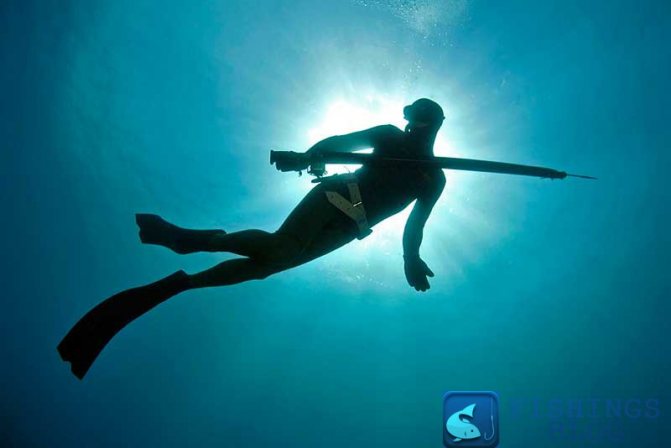
This type of hunting is most effective during the day, given the relatively low transparency of our country’s water bodies. At the same time, you can see the fish almost in front of your face, which is why the river modification of the gun is much shorter. With such a weapon it will be much easier to turn around to shoot without spooking the prey.
On the one hand, the denser the vegetation at the bottom of the reservoir, the more difficult it is to detect fish, but the fish, in turn, feels much calmer in such an environment and is much less timid. You can also find predatory fish in such places, hiding there to quietly hunt for food.
For hunting in such an environment, “combing” the area is often used, which consists of an almost motionless inspection of the area around you, after which you emerge, slowly swim to another place and do the same inspection. You should not try to climb through the thickets, much less chase fish, this will make a lot of noise and reduce your chances of catching.
Rivers of Russia, Ukraine and Belarus
The largest rivers in Eastern Europe suitable for spearfishing:
- Volga
- Dnieper
- Don
The river delta at the entrance to the sea is considered ideal for hunting. There are several reasons for this:
- not deep, i.e. you can hunt with a mask;
- not very widely, i.e. more likely to see and catch fish;
- a lot of different fish, i.e. you will always catch someone;
- warm water.
In the riverbed it becomes deeper and much wider, which in itself complicates the fishing process, but it is upstream that large adult individuals are found. Therefore, if you want to take quality, not quantity, and are not afraid of difficulties, then it makes sense to hunt not in the delta.
Who can you hunt in the river:
- pike, pike perch, perch, asp, bream, burbot, roach, silver carp, grass carp, trout, grayling, carp and many others.
Hunting season: from May to September.
Hunting in a freshwater river is not as spectacular, exotic and beautiful as in clear ocean water. Visibility is low - no more than 7 m at best, and more often - muddy dark water that can create an eerie feeling. Not everyone dares to plunge into the cold abyss, from the bottom of which rotten trees stick out. At the same time, it is unknown what will appear before your eyes, and what your body will rest against in two meters.
However, even in such “harsh” conditions there are those who like to hunt underwater. There are reasons for this. First of all, this is truly extreme. Secondly, the river often contains large fish: if you are lucky, you can catch an 80-kilogram catfish, which is comparable to the weight of oceanic tuna, a 10-kilogram pike or a silver carp weighing 20 kg.
0 0 vote
Article rating
Alloy technique
If you have high accuracy of quick offhand shooting, then a hunting method such as rafting will suit you. That is, you simply swim with the current and shoot at fish in the water column. Here you need to take into account your own speed and the natural reaction of the victim. This method is good because, when swimming downstream, the hunter does not touch branches and vegetation, does not create noise with the movement of the fins, and does not scare the fish.
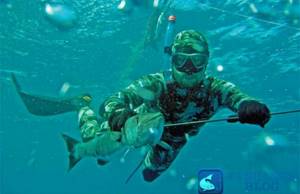
Where exactly is it best to shoot at such a large fish, such as catfish? On this issue, the opinions of many experienced hunters differ significantly. Some say that it is better to shoot behind the head, others that it is better to pierce right through the thick part of the tail, others recommend hitting the front part of the muzzle... There is no single answer to this question.
Preparation for training
An important point is also the correct selection of a wetsuit and fins - these essential elements of scuba equipment will help you either complicate your task or make it much easier, the suit should fit perfectly, as well as the fins. Only by choosing the right equipment can you proceed to the next steps.

Usually we very rarely think about how we breathe, whether we are doing it correctly. Most doctors will certainly say that we do this often extremely ineffectively, because shallow breathing is a very harmful thing, since the lungs receive only the most superficial ventilation, and this is the worst option for your health.
Before diving you will definitely go through:
- To improve the result, it will be necessary for you to try to lose weight, try to spend more time in the fresh air, and lead an active lifestyle. After all, it is the loads that allow you to ventilate the lungs as deeply and effectively as possible.
- Next, try to make all the necessary procedures comprehensive; your body will really need a shake-up.
- Try simple routines first - alternating deep breaths and slow exhalations - this will allow you to effectively test how well your lungs are working.
- But you should not indulge in this matter with fanaticism - especially at the beginning - after active training you may feel dizzy, in especially severe cases fainting is even possible, so it would be correct to gradually increase the load on your lungs - this will be a good guarantee of the occurrence of unwanted health problems.
Taking quality, deepest breaths is what you should focus your closest attention on. The gym is also your good assistant in achieving your plans, because the distribution of oxygen throughout the body becomes more difficult if you are overweight.
The next most important recommendation to help simplify the task you are solving is to try to put yourself into a meditative state, distracting yourself as much as possible from the thoughts that bother you.
Mental cleansing will help distract your thoughts from the lack of oxygen and the production of quite toxic carbon dioxide in your body. Pleasant memories of family vacations together will definitely make you relax.
The secret of pike hunting
An interesting feature has been noticed regarding pikes. They seem to be guarding their territory, and if they meet a hunter, they stop a few steps away, inspect him, and then smoothly turn around and leave, unless of course the hunter stops her before that. In such a situation, you need to remain as motionless as possible, waiting for the right moment; the pike, in turn, will mistake you for a log and behave calmly.
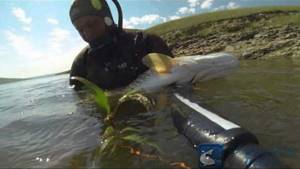
I hope the above tips will help you at least a little in this interesting activity. To achieve a good result in underwater hunting, you will have to devote a lot of time to studying the behavior of fish and developing your own hunting style; a good option is to keep special diaries.
In case of failures, you should not get upset and make hasty conclusions. Only thinking and persistent hunters achieve good results. Try, be interested, and luck will always be on your side!
1. The ability to consciously, comfortably and safely dive while holding your breath (freediving)
2. Possession of the basic equipment of an underwater hunter: an underwater gun
3. Possession of the necessary information regarding the body of water in which you plan to dive and hunt
4. Knowledge of the behavioral characteristics of fish, underwater hunting tactics.
If all these conditions are met, you will definitely enjoy every spearfishing trip.
Since I am a freediving instructor, I would like to talk in detail about the first point, and this is number one for an underwater hunter. Such cases often happen in my practice. Friends, underwater hunters take their friend on a night spearfishing trip, put a suit on him and... A person finds himself in cold water, perhaps even puts on a wetsuit for the first time, and then he also has to dive, also while holding his breath, into dark water, and even and a gun in his hand. In general, there are many factors that can ruin a person’s first impression of proper spearfishing.
What to do if you are a beginner and you have a great desire to do everything correctly, so to speak, scientifically and intellectually...
It is important to start learning from the very basics, namely, first practice many elements, such as correct preparatory breathing, correct recovery breathing, fin stroke technique, general hydrodynamics, body position and much more. Special stretching exercises can make your lung tissue more elastic and your chest more mobile, this will allow you to more comfortably adapt to water pressure at different depths.
In the pool you can try on all the equipment and in laboratory conditions, in good visibility and warm water, see how comfortable you feel in it, how much you can control your movements and motor skills.
Every underwater hunter needs an idea of what happens in the body during breath-holding, and, for example, exercises such as statics (we lie face down on the water and hold our breath, swim, dive, no need to perform any actions, pure breath-holding ). It is then that you will understand what psychological attitudes are hindering you, and you will figure out how to adjust your emotional background so that it does not reduce your results.
Of course, the main principle of breath-hold diving is “on time”; it is necessary to understand on the basis of what sensations we begin to complete our dive, how to plan it from beginning to end.
It is generally accepted that freediving necessarily involves a desire for depth; just look at the beautiful videos from Youtube. In fact, learning to freedive involves conscious, comfortable diving to relatively shallow depths and the ability to “live” there longer. Then, after you complete the courses and feel comfortable at shallow depths, you can always continue your training, aimed at increasing your results, both in the duration of the dive and in its depth. An important aspect when diving in open water is adaptation to changes in pressure and the ability to equalize it, most often this is called “purging”. You learn to equalize pressure in different ways and, of course, the most economical and less traumatic, the Frenzel method.
See you on the surface and underwater! Safe diving!

SSI Freediving Instructor
Maxim Guryanov
This e-mail address is being protected from spambots. You need JavaScript enabled to view it.
tel. +7-937-115-01-01
Tags:
- Spearfishing
- Spearfishing Courses
- Spearfishing Training
Similar materials
- “Do divers need freediving skills?”
- "Endurance in Spearfishing"
- "Lake Tabashino"
- "Lake Karas"
- "New trailer for freediving documentary The Breathe"
- “Freediving, review of interesting videos”
- "Are there mermaids in swimming pools..."
- How to breathe correctly before diving?
- First stream on the freediving channel
- Does freediving need a catch?

